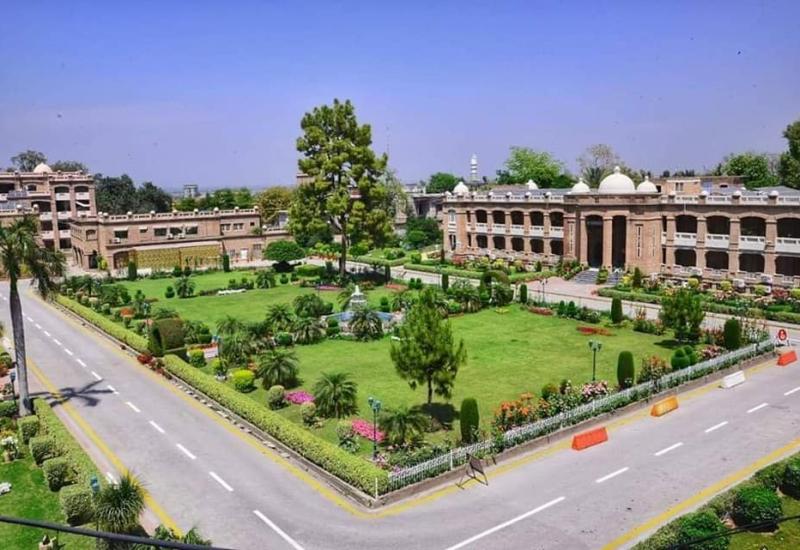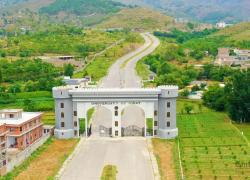An overview of the KPIs formulated for performance appraisal of the Vice Chancellors
The Higher Education Department (HED), Government of Khyber Pakhtunkhwa, for the first time, in the history of public sector universities in the province, has delineated some useful Key Performance Indicators (KPIs) for effective performance appraisal of the Vice Chancellors of the public sector universities. The need for such indices has genuinely been realized since long as such a mechanism was not in place in the past, In fact, nobody took the pain to undertake such an ambitious agenda earlier and for this very reason, the current management of HED deserves all the admiration and credit goes to all those who were involved.
The missing link
In the absence of a robust performance evaluation apparatus, the performance of the Vice Chancellors in the past was assessed in a more superficial and unprofessional manner. For that matter, extension in tenure of the incumbent Vice-Chancellors was not reckoned as a very serious business. In fact, the extension in tenure, for this important position, was virtually confined to just keeping a few individuals- who mattered the most, surpassingly gratified. And it was observed that the setting Vice Chancellors were granted repeated extensions in their tenures without their performance being monitored and evaluated with tangible KPIs in place.
What I personally experienced, in one particular case, for extension in another four years term of a Vice-chancellor, a simple one-page agenda point was placed before the governing body of the university that is Senate which was approved, instantaneously and the very next day a Notification to that effect was issued with nobody raising any question or making any point about his performance during the last four years.
Reforms introduced by the PTI government
During the previous PTI government in Khyber Pakhtunkhwa, for the first time, in the history of public sector universities, various important amendments were made in the Khyber Pakhtunkhwa Universities Act, 2012. Some of these landmark reforms provided representation to the administrative officers of the university in the executive body (i.e. the Syndicate) and the governing body (i.e. the Senate) as well the provision of appointment by promotion of the administrative officers against the administrative positions. Most importantly, the position of ProVice-Chancellor was created and all Deans of the university were given membership in the Syndicate.
The most critical was the curtailment in the tenure of the Vice Chancellor, from four years to three. Another important provision was the formulation of mandatory KPIs for the performance evaluation of the Vice Chancellors and linking renewal of the term with the KPIs as per proviso contained in Section- 12 (6) of the Khyber Pakhtunkhwa Universities amendment Act, 2016 which states that “the tenure of three years may be extended once for another such term on the basis of performance to be evaluated by the government against the key performance indicators to be set up by government.”
The pressing need for KPIs
A more genuine need to that effect was realized early last year when the case of extension in tenure of the Vice Chancellor of Benazir Bhutto Women University Peshawar was furthered. Very recently, the Establishment Department has returned the summary forwarded by the Higher Education Department for extension in the tenure of the Vice-chancellor of Islamia College University with the observation to formulate KPIs and evaluate his performance before submitting a summary for an extension. The overarching aim of these KPIs is that the performance of the Vice Chancellors needs to be methodically judged keeping in view his contribution on academic, research and quality assurance, administration, financial management and planning fronts and extension of services to the affiliated colleges/institutes.
The essence of the KPIs
As the media reports revealed, these KPIs, essentially, consist of a comprehensive list of academic, research and quality assurance related indicators based on the number of all academic programs launched, degrees, diplomas and certificates issued, the number of programs accredited, teachers-students ratio, ratio of the total number of applications received for admission and the total number of students enrolled.
These KPIs comprise of the new academic programs launched and new academic units established, the number of research publications in HEC recognized journals per faculty, the number of national or international conferences and workshops organized by the university, adherence to quality assurance parameters in the university and affiliated colleges.
Compliance with the university calendar for admissions, teaching, examinations, convocation and co-curricular activities, requisite number of meetings of the statutory bodies held as per provision contained in the Act, the number of times emergency powers of the Vice-Chancellor exercised, merit and transparency maintained in the recruitments and selection, disciplinary actions and inquiry proceedings initiated against employees are also incorporated in these KPIs. It also encompasses fulfilment of infrastructural needs of the constituent academic/administrative units and administrative arrangements for maintenance of law and order on the campus.
Other KPIs embrace timely preparation, processing and approval of the annual budget, the number of posts created for faculty, allocation of sufficient funds for co-curricular activities and the number of need and merit-based scholarships awarded to students out of university own funds. It also encompasses revenue generated from internal sources vis-à-vis government grants, compliance with the institutional financial rules including adherence to public procurement rules and conformity of university accounts to international public accounting standards. It also covers the strategic plan for the medium and long-term development of the university, the number of developmental projects completed and new development projects submitted to external agencies for funding.
Suggestions for improvement
If media reports were to be believed the list of the KPIs is veritably exhaustive. Nonetheless, if already not embodied some of the following indicators may be of interest to be considered in the future to be incorporated in the list at an opportune time.
On the most important research side, the number of MS/PhD programs launched, number of meetings of the Advance Studies and Research Board (ASRB) held, number of MS/PhD research proposals approved, the number of MS/PhD degrees awarded within the specified period of time, the number of research journals launched and number of research journals recognized by the HEC/PM&DC, books & book chapters published and patents registered are some of the worthwhile indicators.
To take care of financial health and linkages of the universities, the amount of funding generated from industrial linkages, amount of funding generated from philanthropists and the number of academic programs launched in collaboration with industrial partners, the number of functional MOUs signed with international universities are credible indicators and increase in the standing of the university in both national as well as international rankings. To introduce reforms within the university, the number of meetings of various important committees such as Anomaly Committee, Appellate Committee, Grievance Redressel Committee and Plagiarism Standing Committee held, filling of the key administrative positions from amongst the administrative officers, establishment of a full-fledged Students’ Counseling Center, HR Office, establishment of university-industry linkages, instituting Incubation Centers, the number of startups launched and the amount of funds generated out of it, are some more viable indicators worth considering.
It is also advisable that these KPIs should also be used for annual performance appraisal of the Vice- Chancellors, in order to keep them on their toes and more importantly compensation needs to be tailored with performance and the Vice Chancellors doing exceedingly well on these KPIs should be compensated handsomely and vice-versa.
Conclusion
This is a remarkable first step towards a broad-based, deep-rooted and wholesale development on the landscape of higher education in the country. The incumbent Vice-Chancellor, aspiring for further extension in tenure shall definitely keep an eye on these indicators and shall work diligently not only to bring substantial improvement in the working environment in their respective universities but will also elevate their standing on these KPIs. This will not only institutionalize the system of accountability in the highest seat of learning but will have a trickledown effect paving the way for framing of KPIs for other important academic leadership positions such as the Pro Vice-Chancellor, Deans, Directors and Heads of the Departments.


















